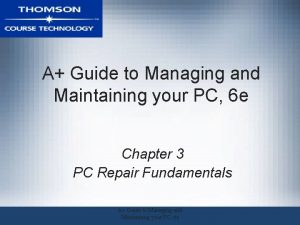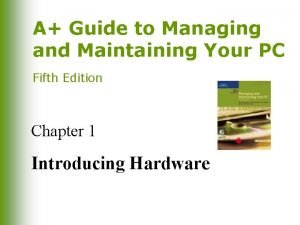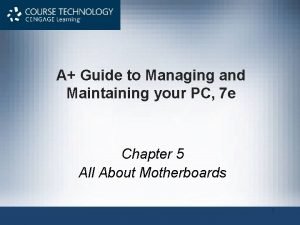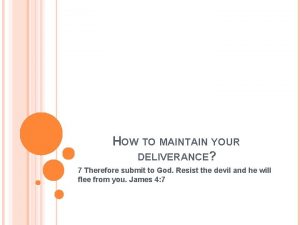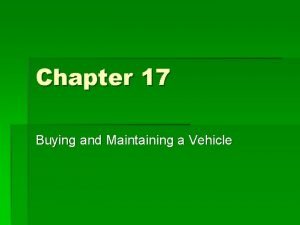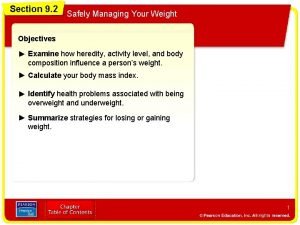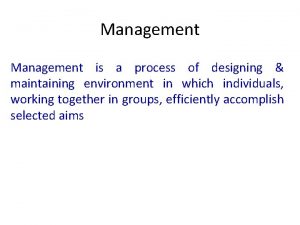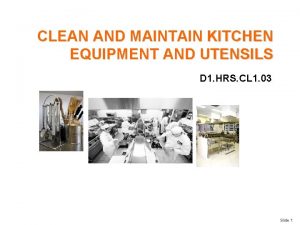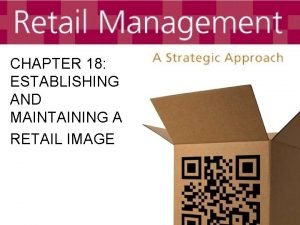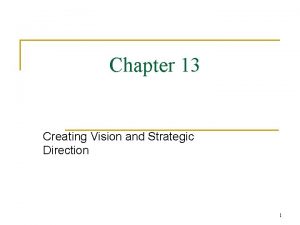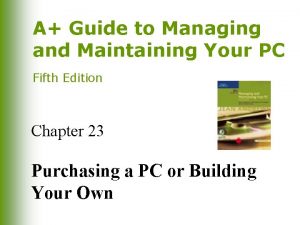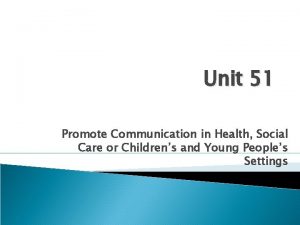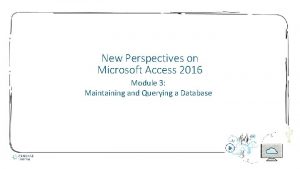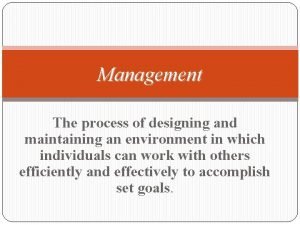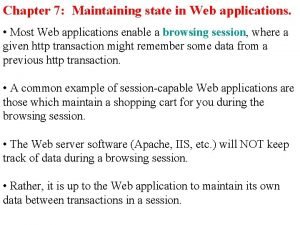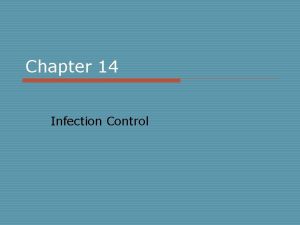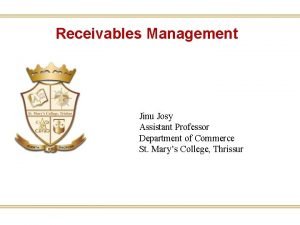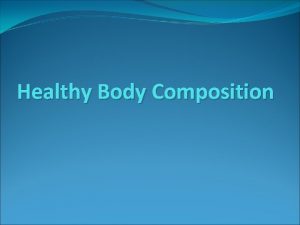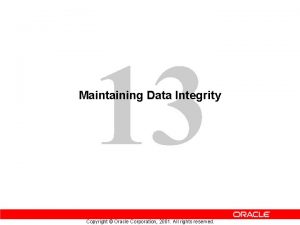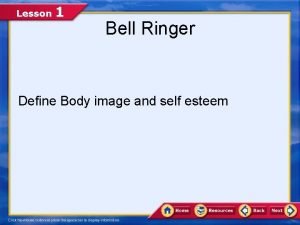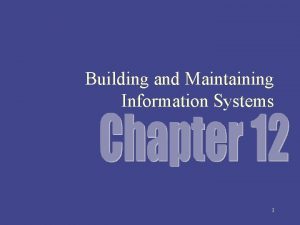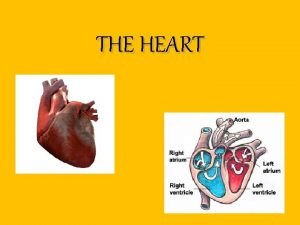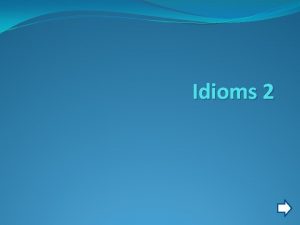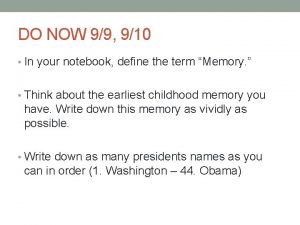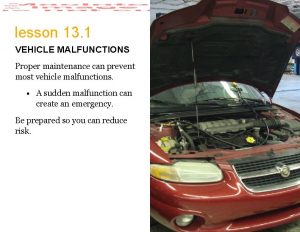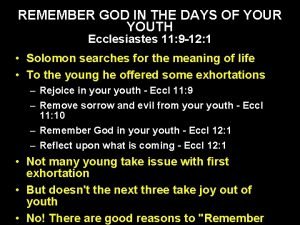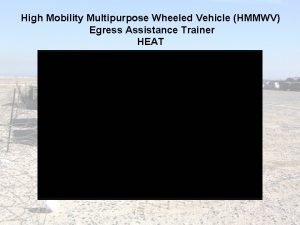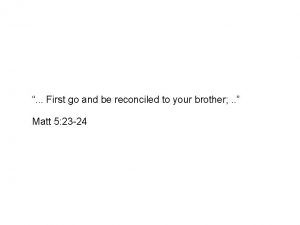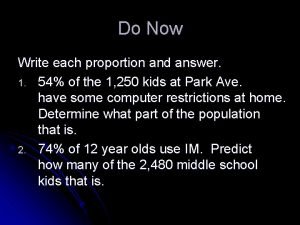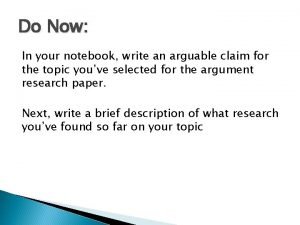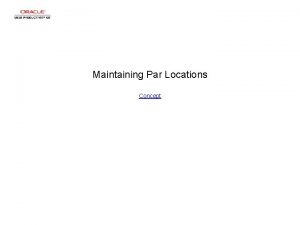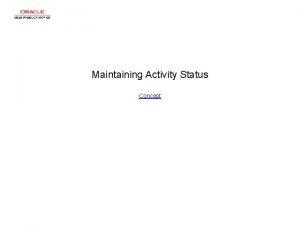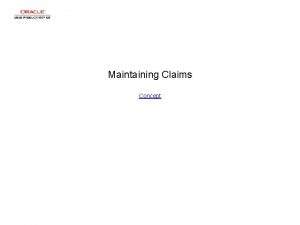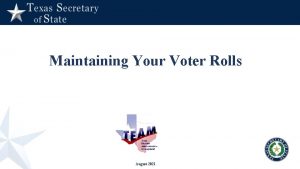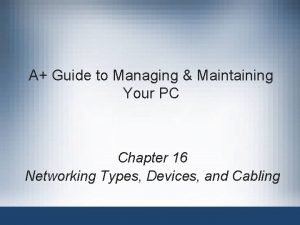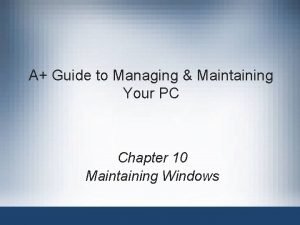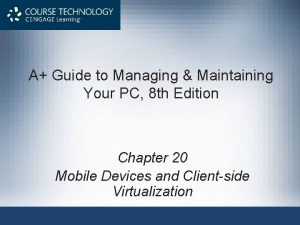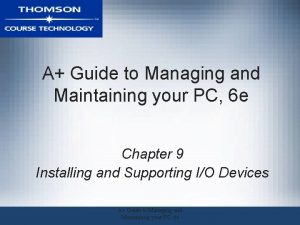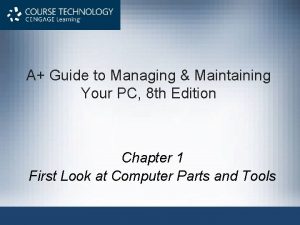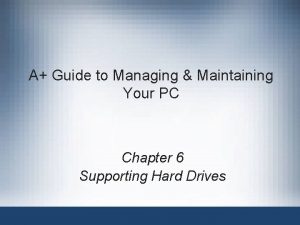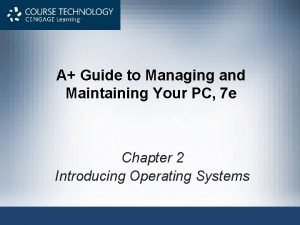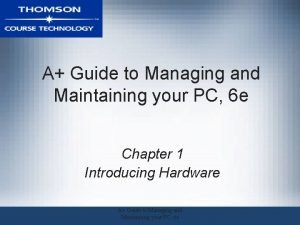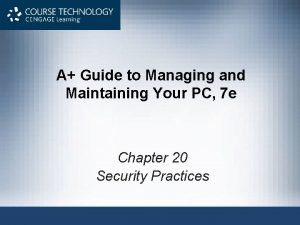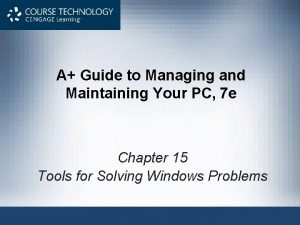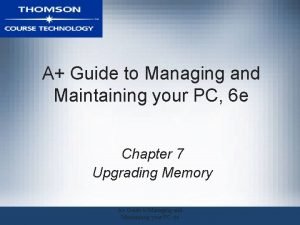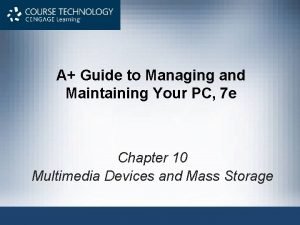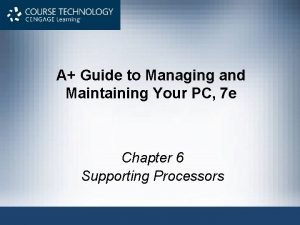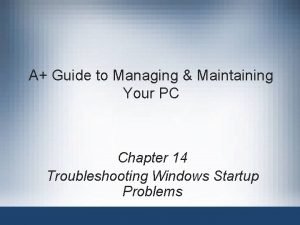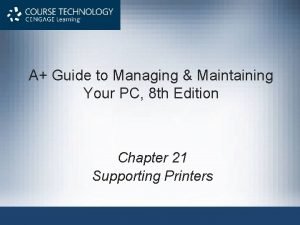A Guide to Managing Maintaining Your PC 8















































![Commands to Manage Files and Folders • Dir [<filename>] [/p] [/s] [/w] – List Commands to Manage Files and Folders • Dir [<filename>] [/p] [/s] [/w] – List](https://slidetodoc.com/presentation_image_h/2053ef4fb90e77c916ab0ea5d5d123cf/image-48.jpg)
![Commands To Manage Files and Folders • MD [drive: ]path – Creates a subdirectory Commands To Manage Files and Folders • MD [drive: ]path – Creates a subdirectory](https://slidetodoc.com/presentation_image_h/2053ef4fb90e77c916ab0ea5d5d123cf/image-49.jpg)


![Commands To Manage Files and Folders • Robocopy <source> [<destination>] [/S] [/E] [/LOG: filename] Commands To Manage Files and Folders • Robocopy <source> [<destination>] [/S] [/E] [/LOG: filename]](https://slidetodoc.com/presentation_image_h/2053ef4fb90e77c916ab0ea5d5d123cf/image-52.jpg)
![Commands To Manage Files and Folders • chkdsk [drive: ] [/f] [/r] – Fixes Commands To Manage Files and Folders • chkdsk [drive: ] [/f] [/r] – Fixes](https://slidetodoc.com/presentation_image_h/2053ef4fb90e77c916ab0ea5d5d123cf/image-53.jpg)
![Commands To Manage Files and Folders • Defrag [drive: ] [/C] – Examines a Commands To Manage Files and Folders • Defrag [drive: ] [/C] – Examines a](https://slidetodoc.com/presentation_image_h/2053ef4fb90e77c916ab0ea5d5d123cf/image-54.jpg)
![Commands To Manage Files and Folders • Format <drive: > [/v: label] [/q] [fs: Commands To Manage Files and Folders • Format <drive: > [/v: label] [/q] [fs:](https://slidetodoc.com/presentation_image_h/2053ef4fb90e77c916ab0ea5d5d123cf/image-55.jpg)
![Commands To Manage Files and Folders • Shutdown [/m \computername] [/i] [/r] [/s] [/f] Commands To Manage Files and Folders • Shutdown [/m \computername] [/i] [/r] [/s] [/f]](https://slidetodoc.com/presentation_image_h/2053ef4fb90e77c916ab0ea5d5d123cf/image-56.jpg)










- Slides: 66

A+ Guide to Managing & Maintaining Your PC, 8 th Edition Chapter 10 Maintaining Windows

Objectives • Learn how to set up and perform scheduled preventive maintenance tasks to keep Windows healthy • Learn how to prepare for disaster by keeping good backups of user data and Windows system files • Learn how to use commands to manage files and folders and how to use Disk Management to manage hard drives • Learn how to configure Windows to use a language other than English A+ Guide to Managing & Maintaining Your PC, 8 th Edition © Cengage Learning 2014 2

Scheduled Preventive Maintenance • Preventive maintenance – Alleviates slow computer performance • Tasks – – Verifying critical Windows settings Clean up the hard drive Checking drive for errors Free up hard drive space A+ Guide to Managing & Maintaining Your PC, 8 th Edition © Cengage Learning 2014 3

Verify Critical Windows Settings • Three Windows settings are critical for keeping a system protected – Explain importance to users so they do not change the settings • Verify updates and service packs are installed – Windows Updates should be configured to automatically allow updating • Antivirus software should be set to scan regularly and up to date • Check that the Windows 7 network location is set correctly A+ Guide to Managing & Maintaining Your PC, 8 th Edition © Cengage Learning 2014 4

Clean Up the Hard Drive • Delete unneeded files occasionally – Windows requires about 15% hard drive free space • Defragmenting drives, burning CDs and DVDs, and other tasks • Ways to improve drive performance and free up space: – – Defragmenting the drive Checking for errors Compressing folders Moving files and folders to other drives A+ Guide to Managing & Maintaining Your PC, 8 th Edition © Cengage Learning 2014 5

Directory Structures • User Profile Namespace – when a user logs onto Windows 7/Vista a user profile is created – A collection of user data and settings – Consists of two general items • A user folder – created under the C: Users folder and contains a group of subfolders collectively called the user profile namespace • Ntuser. dat – file stored in the C: Usersusername folder A+ Guide to Managing & Maintaining Your PC, 8 th Edition © Cengage Learning 2014 6

Directory Structures • Program Files • C: Program Files – where Windows stores program files unless you select a different location • In 64 -bit versions of Windows: – 64 -bit program files are stored in C: Program Files and 32 -bit program files are stored in C: Program Files (x 86) folder A+ Guide to Managing & Maintaining Your PC, 8 th Edition © Cengage Learning 2014 7

Directory Structures • Folders for Windows Data – Registry location: C: Windowssystem 32config – Backup of the registry: C: Windowssystem 32configReg. Back – Fonts: C: WindowsFonts – Temporary files: C: WindowsTemp – Offline files: stored in the client-side caching (CSC) folder which is C: WindowsCSC • Allows users to work with files in the folder when the computer is not connected to a corporate network A+ Guide to Managing & Maintaining Your PC, 8 th Edition © Cengage Learning 2014 8

Use the Disk Cleanup Utility • Use the Windows Disk Cleanup utility to delete temporary files • To use: – Open Windows Explorer, right-click the volume that Windows is installed on, and select Properties – On the General tab, click Disk Cleanup – To see temporary system files that can also be deleted, click Clean up system files – If even more space is needed click the More Options to see what else could be deleted A+ Guide to Managing & Maintaining Your PC, 8 th Edition © Cengage Learning 2014 9

Figure 10 -2 Clean up system files no longer needed in order to free up disk space A+ Guide to Managing & Maintaining Your PC, 8 th Edition © Cengage Learning 2014 10

Defrag the Hard Drive • Defragment: to rearrange fragments or parts of files so each file is stored in contiguous clusters • Two types of hard drives: – Magnetic hard disk drives (HDDs) – contain spinning platters • Windows 7/Vista automatically defrags once a week – Solid-state drives (SSDs) – contain flash memory • Has no moving parts so defrag does not improve read/write time • Defragmenting this type of drive is not recommended A+ Guide to Managing & Maintaining Your PC, 8 th Edition © Cengage Learning 2014 11

Defrag the Hard Drive • Cluster (also called file allocation unit): group of whole sectors in a file system – Number of sectors in a cluster is fixed • A file is stored in whole clusters – Unused space at end of last cluster is called slack and is wasted free space • As files are written and deleted from a drive, clusters are used, released, and used again – Moving arm of drive may have to move all over a drive to collect all fragments of a file • Slows down performance • Solution is to defragment the drive A+ Guide to Managing & Maintaining Your PC, 8 th Edition © Cengage Learning 2014 12

Figure 10 -4 Windows is set to automatically defragment a magnetic hard drive once a week A+ Guide to Managing & Maintaining Your PC, 8 th Edition © Cengage Learning 2014 13

Check the Hard Drive for Errors • Error checking utility: searches for bad sectors on a volume and recovers the data from them if possible • To use error checking utility: – Right-click the drive in Windows Explorer and select Properties from the shortcut menu – Click the Tools tab and click Check now – In the Check Disk dialog box, check Automatically fix file system errors and Scan for and attempt recovery of bad sectors – Click Start A+ Guide to Managing & Maintaining Your PC, 8 th Edition © Cengage Learning 2014 14

Figure 10 -6 Windows repairs hard drive errors under the drive’s Properties box using Windows Explorer A+ Guide to Managing & Maintaining Your PC, 8 th Edition © Cengage Learning 2014 15

Free Up Space On the Drive • Uninstall software you no longer use • Move data off the drive – Consider moving videos, photos, and other data to an external hard drive or burning them to DVDs • Move programs off the drive – Uninstall a program and reinstall it on a second hard drive • Use drive or folder compression – It is not recommended to compress the volume on which Windows is stored A+ Guide to Managing & Maintaining Your PC, 8 th Edition © Cengage Learning 2014 16

Move the Virtual Memory Paging File • Virtual memory: a file used to enhance the amount of RAM in a system • To save space you can move virtual memory paging file – Pagefile. sys • Hidden file stored in C drive root directory – Move to another partition on the same or different drive • New drive speed should be equal to or greater than existing drive and should have plenty of free space (at least three times the amount of installed RAM) A+ Guide to Managing & Maintaining Your PC, 8 th Edition © Cengage Learning 2014 17

Figure 10 -7 Manage virtual memory using the System Properties box A+ Guide to Managing & Maintaining Your PC, 8 th Edition © Cengage Learning 2014 18

Figure 10 -8 Move Pagefile. sys to a different drive A+ Guide to Managing & Maintaining Your PC, 8 th Edition © Cengage Learning 2014 19

Backup Procedures • Backup – Extra copy of a data or software file • Use if original file becomes damaged or destroyed • Ways to lose data – System failure, virus, file corruption, or some other problem • Never trust important data to only one media A+ Guide to Managing & Maintaining Your PC, 8 th Edition © Cengage Learning 2014 20

Planning For Disaster Recovery • Decisions to make for a backup and recovery plan – Decide on backup media – Decide on the backup software • Consider purchasing third-party backup software – Easier to use – Offers more features than Microsoft utility – Decide how simple or complex your backup strategy should be • Large organizations might require backups be documented daily, scheduled at certain times of the day or night, and recovery plans tested regularly A+ Guide to Managing & Maintaining Your PC, 8 th Edition © Cengage Learning 2014 21

Planning For Disaster Recovery • After backup plan is in place, test the recovery plan – Test the recovery process • Erase a file and use the recovery procedures to verify that you can restore the file from backup – Keep backups in a safe place and routinely test them • Should be kept under lock and key • In case of fire, keep backups off-site • Routinely verify backups are good by performing a test recovery of a backed-up file or folder A+ Guide to Managing & Maintaining Your PC, 8 th Edition © Cengage Learning 2014 22

Create and Use Backups in Windows 7 • Back up the Windows Volume – Called the system image • Points to keep in mind : – A system image includes the entire drive on which Windows is installed – A system image must be created on an internal or external hard drive – Don’t depend just on the system image as your backup – You can create a system image any time after Windows is installed A+ Guide to Managing & Maintaining Your PC, 8 th Edition © Cengage Learning 2014 23

Figure 10 -10 Use the Backup and Restore window to create a system image A+ Guide to Managing & Maintaining Your PC, 8 th Edition © Cengage Learning 2014 24

Create and Use Backups in Windows 7 • Back up user data – 1. Open the Backup and Restore window – 2. Select the media to hold the backup – 3. In the next box, select Let me choose so you can select the folder to backup, then click Next – 4. In the next box, select the libraries and folders you want to back up, click Next to continue – 5. Verify the correct folders and libraries are selected • You can also change the frequency in this step – 6. Review your backup settings and click Save settings and run backup A+ Guide to Managing & Maintaining Your PC, 8 th Edition © Cengage Learning 2014 25

Figure 10 -11 Select the destination media to hold the backup A+ Guide to Managing & Maintaining Your PC, 8 th Edition © Cengage Learning 2014 26

Figure 10 -13 Select the folders or libraries to include in the backup A+ Guide to Managing & Maintaining Your PC, 8 th Edition © Cengage Learning 2014 27

Create and Use Backups in Windows 7 • Recover a Corrupted or Lost File or Folder – 1. Make the backup media available to computer – 2. Open Backup and Restore and click Restore my files – 3. Use one of three buttons to locate the file or folder • Follow directions on-screen to restore • To restore a previous version of a file or folder: – 1. Copy the corrupted file or folder to a new location – 2. Right click the file or folder and select Restore previous version – 3. Select the version you want and click Restore A+ Guide to Managing & Maintaining Your PC, 8 th Edition © Cengage Learning 2014 28

Figure 10 -17 Restore a file or folder from a previous version A+ Guide to Managing & Maintaining Your PC, 8 th Edition © Cengage Learning 2014 29

Create and Use Backups in Windows 7 • Windows System Protection – automatically backs up system files and stores them at regular intervals • Restore point – Condition at time a snapshot taken – Includes Windows system files • Restore points are taken at least every 24 hours • Can use up to 15 percent of disk space – If disk space gets too low, restore points are no longer made • Can manually create restore point at any time using the System Protection tab of System Properties A+ Guide to Managing & Maintaining Your PC, 8 th Edition © Cengage Learning 2014 30

Figure 10 -18 Make sure System Protection is turned on which Windows is installed A+ Guide to Managing & Maintaining Your PC, 8 th Edition © Cengage Learning 2014 31

Create and Use Backups in Windows 7 • Apply a restore point – System Restore restores the system to its condition at the time a restore point is made – User data not altered – Can affect installed software, hardware, user settings, and OS configuration settings – Changes made to settings are lost after restore point is created – Always use most recent restore point capable of fixing the problem A+ Guide to Managing & Maintaining Your PC, 8 th Edition © Cengage Learning 2014 32

Create and Use Backups in Windows 7 • Points to remember about system restore – Great tool for fixing a device, restoring Windows settings, and solving application problems – Limitations • • Recovers from errors only if registry somewhat intact Process cannot remove virus or worm infection Process might create a new problem Process might make many changes to a system Process requires restore points Restore points kept in a hidden folder on the hard drive Viruses and malware sometimes hide in restore points Can launch System Restore using startup recovery tools A+ Guide to Managing & Maintaining Your PC, 8 th Edition © Cengage Learning 2014 33

Managing Files, Folders, and Storage Devices • This section of the chapter covers: – Managing files and folders using commands in a command prompt window – Managing hard drive partitions and volumes using the Disk Management utility A+ Guide to Managing & Maintaining Your PC, 8 th Edition © Cengage Learning 2014 34

How Partitions and File Systems Work • All data is stored on a hard drive in sectors (records) • Each sector on drive is the same size (usually 512 bytes) • Low-level formatting: A process (usually performed at the factory) that electronically creates the hard drive tracks and sectors and tests for bad spots – Size of the sector and total number of sectors determine capacity – Today’s drive capacities are measured in GB (gigabytes) or TB (terabytes) A+ Guide to Managing & Maintaining Your PC, 8 th Edition © Cengage Learning 2014 35

Figure 10 -20 A magnetic hard drive is divided into concentric circles called tracks, and tracks are divided into sectors A+ Guide to Managing & Maintaining Your PC, 8 th Edition © Cengage Learning 2014 36

How Partitions and File Systems Work • Hard drives are further divided into one or more partitions (can have up to four in Windows) – Maps of the partitions are kept in a partition table in the first sector of the drive called the Master Boot Record (MBR) – Can have up to three primary partitions (also called volumes) – A fourth partition (called extended partition) can hold one or more volumes called logical drives A+ Guide to Managing & Maintaining Your PC, 8 th Edition © Cengage Learning 2014 37

Figure 10 -21 A hard drive with four partitions; the fourth partition is an extended partition A+ Guide to Managing & Maintaining Your PC, 8 th Edition © Cengage Learning 2014 38

How Partitions and File Systems Work • Before a drive can be used it must be: – Assigned a drive letter (C: or D: ) – Formatted using a file system • File system is overall structure an OS uses to name, store, and organize files on a drive • Windows 7 supports three types of file systems: NTFS, FAT 32, and ex. FAT • Windows assigns two functions to partitions: – System partition (usually drive C: ) – active partition that contains the OS program to start up Windows – Boot partition – partition where Windows OS is stored A+ Guide to Managing & Maintaining Your PC, 8 th Edition © Cengage Learning 2014 39

Figure 10 -22 Two types of Windows hard drive partitions A+ Guide to Managing & Maintaining Your PC, 8 th Edition © Cengage Learning 2014 40

How Partitions and File Systems Work • File systems supported by Windows for volumes that don’t hold the Windows installation: – NTFS – uses smaller allocation unit or cluster sizes than FAT 32 (more efficient) – ex. FAT – use for large external storage devices to be used with other operating systems – FAT 32 – use for small hard drives or USB flash drives – FAT 16 – only recommended on volumes less than 4 GB – CDFS(Compact Disc File System) and UDF – CDFS is an older file system used by optical discs and is being replaced by UDF (Universal Disc Format) A+ Guide to Managing & Maintaining Your PC, 8 th Edition © Cengage Learning 2014 41

Commands To Manage Files and Folders • Command prompt window – Open by entering cmd. exe in the search box – Provides a Command Line Interface (CLI) • Enter command lines to perform a variety of tasks Figure 10 -24 Use the exit command to close the command prompt window A+ Guide to Managing & Maintaining Your PC, 8 th Edition © Cengage Learning 2014 42

Commands to Manage Files and Folders • Windows 7 and Vista have two levels of command prompt windows – Standard window – default directory is the currently logged on user’s folder • Commands requiring administrative privileges will not work – Elevated window – requires the user to logon as an administrator • The word “administrator” will appear in the title bar • Default directory will be C: Windowssystem 32 A+ Guide to Managing & Maintaining Your PC, 8 th Edition © Cengage Learning 2014 43

Figure 10 -25 An elevated command prompt window has administrative privileges A+ Guide to Managing & Maintaining Your PC, 8 th Edition © Cengage Learning 2014 44

Commands to Manage Files and Folders • Tips for working in a command prompt window: – Type cls and press Enter to clear the window – Press the up arrow to retrieve the last command – Press the right arrow to retrieve the last command line one character at a time – Press Ctrl+Break or Ctrl+Pause to terminate a command before it is finished – Type exit and press Enter to close the window A+ Guide to Managing & Maintaining Your PC, 8 th Edition © Cengage Learning 2014 45

Commands To Manage Files and Folders • File naming conventions – Filename and file extension characters • Letters a through z and numbers 0 through 9 • Characters: _ ^ $~ ! # % & – { } ( ) @ ' ` – Filename with spaces: • Enclose filename in double quotation marks • Wildcard characters in command lines – Question mark (? ): wildcard for one character – Asterisk (*): wildcard for one or more characters A+ Guide to Managing & Maintaining Your PC, 8 th Edition © Cengage Learning 2014 46

Commands To Manage Files and Folders • Help or <command name> /? Table 3 -1 Sample help commands A+ Guide to Managing & Maintaining Your PC, 8 th Edition © Cengage Learning 2014 47
![Commands to Manage Files and Folders Dir filename p s w List Commands to Manage Files and Folders • Dir [<filename>] [/p] [/s] [/w] – List](https://slidetodoc.com/presentation_image_h/2053ef4fb90e77c916ab0ea5d5d123cf/image-48.jpg)
Commands to Manage Files and Folders • Dir [<filename>] [/p] [/s] [/w] – List files and directories Table 3 -2 Sample dir commands A+ Guide to Managing & Maintaining Your PC, 8 th Edition © Cengage Learning 2014 48
![Commands To Manage Files and Folders MD drive path Creates a subdirectory Commands To Manage Files and Folders • MD [drive: ]path – Creates a subdirectory](https://slidetodoc.com/presentation_image_h/2053ef4fb90e77c916ab0ea5d5d123cf/image-49.jpg)
Commands To Manage Files and Folders • MD [drive: ]path – Creates a subdirectory under a directory • CD [drive: ]path or CD. . – Changes current default directory – Use. . after CD to move from child directory to its parent directory • RD [drive: ]path – Removes a subdirectory • Directory must contain no files • Directory must contain no subdirectories • Directory must not be current directory A+ Guide to Managing & Maintaining Your PC, 8 th Edition © Cengage Learning 2014 49

Commands To Manage Files and Folders • Del or Erase <filename> – Erases files or groups of files • Ren <filename 1> <filename 2> – Renames a file • Copy <source> [<destination>] [/V] [/Y] – Useful switches or parameters • /V: size of each new file compared to the size of original file • /Y: confirmation message does not appear asking to confirm before overwriting a file A+ Guide to Managing & Maintaining Your PC, 8 th Edition © Cengage Learning 2014 50

Commands To Manage Files and Folders • Recover <filename> – Attempts to recover a file when parts corrupted • Xcopy <source> [<destination>] [/S] [/C] [/Y] [/D: date] A+ Guide to Managing & Maintaining Your PC, 8 th Edition © Cengage Learning 2014 51
![Commands To Manage Files and Folders Robocopy source destination S E LOG filename Commands To Manage Files and Folders • Robocopy <source> [<destination>] [/S] [/E] [/LOG: filename]](https://slidetodoc.com/presentation_image_h/2053ef4fb90e77c916ab0ea5d5d123cf/image-52.jpg)
Commands To Manage Files and Folders • Robocopy <source> [<destination>] [/S] [/E] [/LOG: filename] [/LOG+: filename] [/move] [/purge] – Robust File Copy command Table 3 -4 Robocopy commands and results A+ Guide to Managing & Maintaining Your PC, 8 th Edition © Cengage Learning 2014 52
![Commands To Manage Files and Folders chkdsk drive f r Fixes Commands To Manage Files and Folders • chkdsk [drive: ] [/f] [/r] – Fixes](https://slidetodoc.com/presentation_image_h/2053ef4fb90e77c916ab0ea5d5d123cf/image-53.jpg)
Commands To Manage Files and Folders • chkdsk [drive: ] [/f] [/r] – Fixes file system errors – Recovers data from bad sectors Figure 10 -27 Lost and cross-linked clusters A+ Guide to Managing & Maintaining Your PC, 8 th Edition © Cengage Learning 2014 53
![Commands To Manage Files and Folders Defrag drive C Examines a Commands To Manage Files and Folders • Defrag [drive: ] [/C] – Examines a](https://slidetodoc.com/presentation_image_h/2053ef4fb90e77c916ab0ea5d5d123cf/image-54.jpg)
Commands To Manage Files and Folders • Defrag [drive: ] [/C] – Examines a drive for fragmented files • Rewrites fragmented files in contiguous clusters Table 3 -5 Defrag commands and results A+ Guide to Managing & Maintaining Your PC, 8 th Edition © Cengage Learning 2014 54
![Commands To Manage Files and Folders Format drive v label q fs Commands To Manage Files and Folders • Format <drive: > [/v: label] [/q] [fs:](https://slidetodoc.com/presentation_image_h/2053ef4fb90e77c916ab0ea5d5d123cf/image-55.jpg)
Commands To Manage Files and Folders • Format <drive: > [/v: label] [/q] [fs: <filesystem>] – Format command Table 3 -6 Format commands and results A+ Guide to Managing & Maintaining Your PC, 8 th Edition © Cengage Learning 2014 55
![Commands To Manage Files and Folders Shutdown m computername i r s f Commands To Manage Files and Folders • Shutdown [/m \computername] [/i] [/r] [/s] [/f]](https://slidetodoc.com/presentation_image_h/2053ef4fb90e77c916ab0ea5d5d123cf/image-56.jpg)
Commands To Manage Files and Folders • Shutdown [/m \computername] [/i] [/r] [/s] [/f] [/t xx] – Shut down the local computer or a remote computer Figure 10 -7 Shutdown commands and results A+ Guide to Managing & Maintaining Your PC, 8 th Edition © Cengage Learning 2014 56

Use Disk Management To Manage Hard Drives • Disk Management is the primary tool for managing hard drives – Manage partitions, prepare a new drive for first use, mount a drive, use Windows dynamic disks, or troubleshoot problems with the hard drive • Manage Partitions – Use Disk Management to resize, create, and delete partitions A+ Guide to Managing & Maintaining Your PC, 8 th Edition © Cengage Learning 2014 57

Figure 10 -29 Shrink a volume to make room for a new partition A+ Guide to Managing & Maintaining Your PC, 8 th Edition © Cengage Learning 2014 58

Use Disk Management To Manage Hard Drives • Prepare a drive for first use – Step 1: Initialize the Disk • Choose the MBR system or Globally Unique Identifier Partition Table (GUID or GPT) system • MBR system can have up to four partitions • GPT system can support up to 128 partitions and is recommended for drives larger than 2 TB – Step 2: Create a Volume and Format It with a File System A+ Guide to Managing & Maintaining Your PC, 8 th Edition © Cengage Learning 2014 59

Use Disk Management To Manage Hard Drives • How to Mount a Drive – Mounted drive is a volume accessible by a folder on another volume • Folder has more available space – Mount point: C: Projects folder Figure 10 -33 The C: Projects folder is the mount point for the mounted drive A+ Guide to Managing & Maintaining Your PC, 8 th Edition © Cengage Learning 2014 60

Use Disk Management To Manage Hard Drives • Windows Dynamic Disks – Several dynamic disks can work together to collectively present a single dynamic volume – Data to configure each hard drive is stored in a disk management database (resides in last 1 MB of space on each hard drive) – Better reliability, spanning, stripping (RAID 0) to improve performance, mirror two hard drives for fault tolerance (RAID 1) for XP A+ Guide to Managing & Maintaining Your PC, 8 th Edition © Cengage Learning 2014 61

Use Disk Management To Manage Hard Drives • Windows dynamic disks (cont’d. ) – Disk Management converts two or more basic disks to dynamic disks Figure 10 -37 Convert a basic disk to a dynamic disk A+ Guide to Managing & Maintaining Your PC, 8 th Edition © Cengage Learning 2014 62

Use Disk Management To Manage Hard Drives • Drive and volume statuses: – – – – Healthy Failed Online Active Unallocated Formatting Basic Dynamic • Offline, foreign drive, and healthy (at risk) A+ Guide to Managing & Maintaining Your PC, 8 th Edition © Cengage Learning 2014 63

Regional and Language Settings • Configure computer to use a different language – For Windows 7/Vista Ultimate and Enterprise editions, use Windows Update to download and install the language pack – For all editions of Windows 7/Vista/XP, download and install a limited Language Interface Pack (LIP) using Windows Update • Getting LIP for other Windows editions – Go to Microsoft Web site A+ Guide to Managing & Maintaining Your PC, 8 th Edition © Cengage Learning 2014 64

Summary • Regular preventive maintenance – Improves performance and troubleshooting • Verify Windows settings, defragment hard drives, check drive for errors, reduce startup process to essentials, and free up hard drive space • Windows offers may preventative maintenance tools • Plan for disaster recovery in the event a hard drive fails by performing routine backups of data and system files • Windows 7 Backup and Restore can be used to schedule routine backups of user data files A+ Guide to Managing & Maintaining Your PC, 8 th Edition © Cengage Learning 2014 65

Summary • Commands useful to manage files, folders and storage media include Help, Dir, Del, Copy, Recover, Xcopy, Robocopy, MD, CD, RD, Chkdsk, Defrag, and Format • Use Disk Management to manage hard drives and partitions • A language pack can be downloaded and installed in Windows 7/Vista Ultimate and Enterprise editions • A limited LIP can be downloaded and installed in any edition of Windows 7/Vista A+ Guide to Managing & Maintaining Your PC, 8 th Edition © Cengage Learning 2014 66
 Guide to managing and maintaining your pc
Guide to managing and maintaining your pc Guide to managing and maintaining your pc
Guide to managing and maintaining your pc Guide to managing and maintaining your pc
Guide to managing and maintaining your pc Managing your own business
Managing your own business How to maintain deliverance by olukoya
How to maintain deliverance by olukoya Chapter 17 maintaining your vehicle answers
Chapter 17 maintaining your vehicle answers Give us your hungry your tired your poor
Give us your hungry your tired your poor Managing your personal finances textbook answers
Managing your personal finances textbook answers Chapter 16 managing the stress in your life
Chapter 16 managing the stress in your life Managing your online identity
Managing your online identity Managing your payables
Managing your payables Managing your weight part 2
Managing your weight part 2 Types of records in hospital
Types of records in hospital The process of designing and maintaining an environment
The process of designing and maintaining an environment Building and maintaining a website
Building and maintaining a website Clean and maintain kitchen premises
Clean and maintain kitchen premises Retail image
Retail image Elements of retail image
Elements of retail image Maintaining a healthy body composition and body image
Maintaining a healthy body composition and body image Maintaining a professional image
Maintaining a professional image Class maintaining prefixes
Class maintaining prefixes Chapter 15 infection control
Chapter 15 infection control Vision focuses on the current reality and maintaining it
Vision focuses on the current reality and maintaining it Chapter 11 lesson 2 body image and eating disorders
Chapter 11 lesson 2 body image and eating disorders Purchasing and maintaining a computer
Purchasing and maintaining a computer Potential tension between maintaining confidentiality
Potential tension between maintaining confidentiality Developing a teachable spirit
Developing a teachable spirit Maintaining a website
Maintaining a website Access module 3 maintaining a database
Access module 3 maintaining a database The process of designing and maintaining an environment
The process of designing and maintaining an environment Social order maintaining orientation
Social order maintaining orientation Maintaining effective partnerships
Maintaining effective partnerships Maintaining state in web applications
Maintaining state in web applications Maintaining transmission based isolation precautions
Maintaining transmission based isolation precautions Ways to maintain ecological balance
Ways to maintain ecological balance Cost of maintaining receivables
Cost of maintaining receivables The maintaining of an internal balance
The maintaining of an internal balance Maintaining a healthy body composition and body image
Maintaining a healthy body composition and body image Maintaining student privacy
Maintaining student privacy Building and maintaining customer relationships
Building and maintaining customer relationships Restoring lost body fluids
Restoring lost body fluids Maintaining
Maintaining Maintaining curiosity
Maintaining curiosity Maintaining a healthy body composition and body image
Maintaining a healthy body composition and body image Maintaining information systems
Maintaining information systems Coping with gay loneliness
Coping with gay loneliness Stop blaming your parents for your problems
Stop blaming your parents for your problems How does the heart pump work
How does the heart pump work There's too many kids in this tub
There's too many kids in this tub How to introduce your friend to your teacher
How to introduce your friend to your teacher R
R Answer the questions write in your notebook
Answer the questions write in your notebook In your notebook define the following terms in your words
In your notebook define the following terms in your words Enagic founder
Enagic founder Your conscious awareness of your own name
Your conscious awareness of your own name Teach me your ways oh lord
Teach me your ways oh lord If your vehicle malfunctions, turn on your hazard lights
If your vehicle malfunctions, turn on your hazard lights Example of
Example of Write a story for your school magazine
Write a story for your school magazine Where your treasure is there your heart will be also
Where your treasure is there your heart will be also Remember god in your youth
Remember god in your youth Rascal flatts my wish for you
Rascal flatts my wish for you Your passenger jammed his finger in the door of your m1114
Your passenger jammed his finger in the door of your m1114 First go and be reconciled to your brother
First go and be reconciled to your brother Each proportion write your answer in your notebook
Each proportion write your answer in your notebook In your notebook write questions with how much or how many
In your notebook write questions with how much or how many Treasure what you have
Treasure what you have
